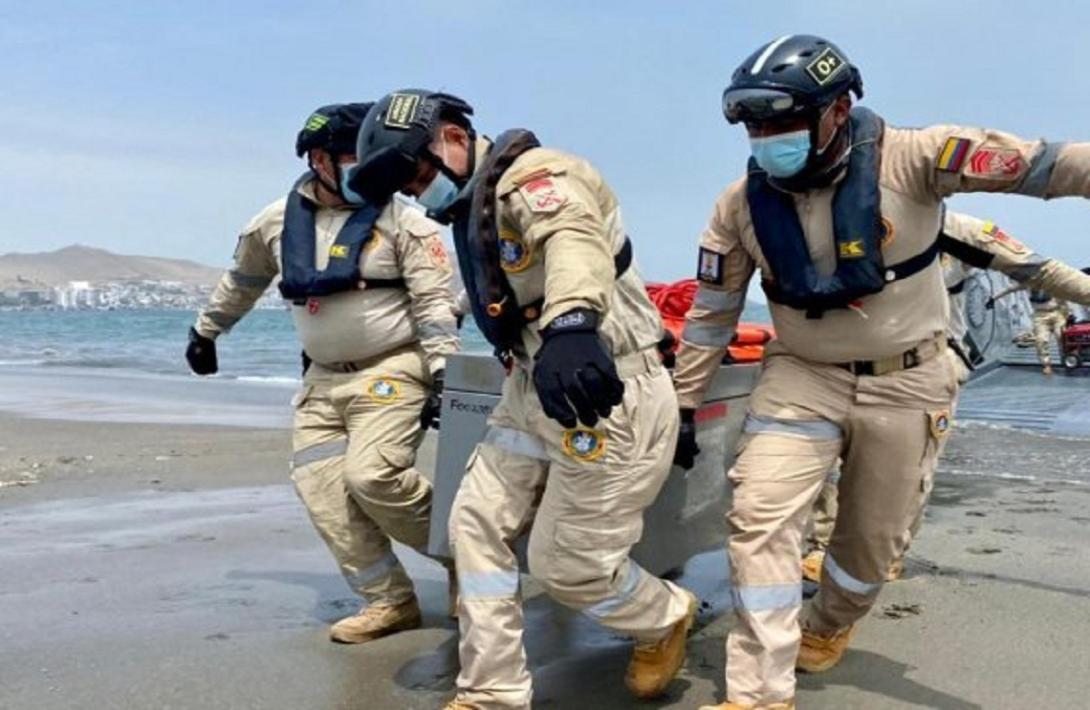With the purpose of strengthening interoperability and acting as a first response Task Force to large-scale natural disasters on the Pacific coast, the Colombian Navy led the third phase of the multinational humanitarian assistance exercise SOLIDAREX 2021, which included the participation of the Peruvian Navy and the Ecuadorian Navy. The exercise, conducted from October 20 to 24, had as a theater the Beach of the municipality of Juanchaco, in Buenaventura, in Valle del Cauca.
Seven ships, eight MK5 type boats, two Coast Guard Rapid Reaction boats, three urban search and rescue teams (USAR), two helicopters and more than 500 military units were driven to respond to a simulated tsunami emergency. The Navy participants improve their Resources and skills to act in a timely and efficient manner before the emergency caused by weather phenomena. In the same way they exchanged knowledge and experiences in the tactics, techniques and procedures under the methodology of the United Nations (INSARAG), with the purpose of increasing the interoperability and improve the combined response to a natural disaster.
The exercise, chaired by Vice Admiral Ricardo Hurtado Chacón, Chief of Staff for Operations of the Colombian Navy, was attended by directors of the National Risk and Disaster Management Unit, the Fire Department and the International Red Cross, who served as observers of the operation. In the same way, it counted on the participation of the Naval Attachés of Peru and Ecuador in Colombia.
With the execution of this third phase, which was successfully conducted thanks to the leadership of the Colombian Navy, the Multinational Operation Solidarex 2021 ends. This operation took place from 07 to 24 October on the coasts of Peru, Ecuador and Colombia, fulfilling the proposed objectives: Develop Resources in joint and combined operations; promote multinational leadership in support of future humanitarian assistance projects; acquire capacity to plan and operate in a pandemic environment; train naval-military troops in amphibious first response operations in a major natural disaster; increase the interoperability of participating Military Forces and, improve coordination capacity with other State institutions responsible for risk management.
Source: press-Colombian Navy





